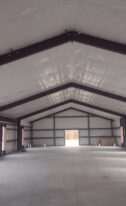THE WILLIS TOWER (formerly known as the Sears' Tower), held the title of tallest skyscraper for 25 years.
It has stood as an emblem of the Chicago Skyline. In a city that prides itself on uncommon architecture, this building stands as a testament of Chicago's history and innovative style.
In 1969, Sears Roebuck and Company was the world's largest retailer, employing approximately 350,000 people across Chicago. In order to consolidate current staff and accommodate anticipated growth, the company hired SOM to design a three million-square-foot office tower. The inhabitants of the bustling office building generated new energy in a formerly stagnant West Loop neighborhood.
The intimate history the Tower has with a residents of the Windy City explains why many Chicagoans still nostalgically refer to the building as the Sears Tower. On July 16, 2009, the name of the building was officially changed to Willis Tower. A London based insurance broker leased part of the building and managed to obtain the naming rights.
As for the infrastructure, the architects relied on steel's strength to minimize the lateral sway that could be caused by Chicago's unique windy condition. The steel was prefabricated, with nearly all welding done off the erection site and bolt connections made at the site. The building itself is made up of multiple sites connected together by a series of tubes. The sleek design of the building is a showcase of how Chicago's design help overcome its sometimes unfavorable weather conditions.
Steel, of course, was the optimal choice to build the tallest tower.
While you may not be looking to construct the next Willis Tower (unless you do it in Minecraft) steel has certainly be credited as strong and enduring regardless of weather conditions. By choosing steel you will be choosing an infrastructure that will possibly last you a lifetime without compromising the integrity of the building.








